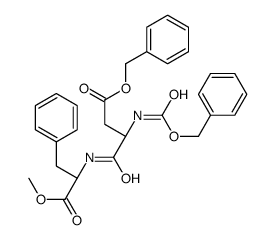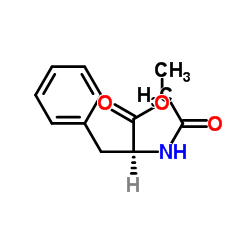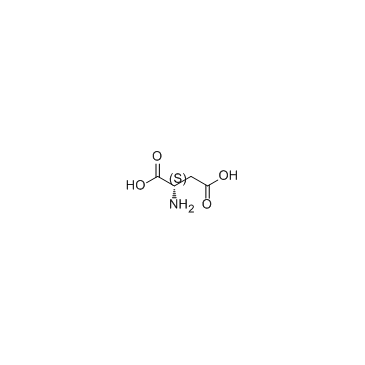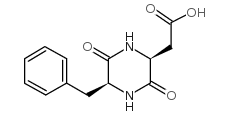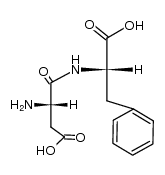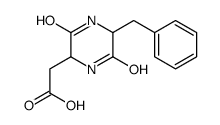CHEMICAL IDENTIFICATION
-
RTECS NUMBER :
-
WM3407000
-
CHEMICAL NAME :
-
Succinamic acid, 3-amino-N-(alpha-carboxyphenethyl)-, N-methyl ester, stereoisomer
-
CAS REGISTRY NUMBER :
-
22839-47-0
-
LAST UPDATED :
-
199701
-
DATA ITEMS CITED :
-
16
-
MOLECULAR FORMULA :
-
C14-H18-N2-O5
-
MOLECULAR WEIGHT :
-
294.34
HEALTH HAZARD DATA
ACUTE TOXICITY DATA
-
TYPE OF TEST :
-
TDLo - Lowest published toxic dose
-
ROUTE OF EXPOSURE :
-
Oral
-
SPECIES OBSERVED :
-
Human - woman
-
DOSE/DURATION :
-
3710 ug/kg
-
TOXIC EFFECTS :
-
Skin and Appendages - dermatitis, allergic (after systemic exposure)
-
REFERENCE :
-
AIMEAS Annals of Internal Medicine. (American College of Physicians, 4200 Pine St., Philadelphia, PA 19104) V.1- 1927- Volume(issue)/page/year: 104,207,1986
-
TYPE OF TEST :
-
LD50 - Lethal dose, 50 percent kill
-
ROUTE OF EXPOSURE :
-
Oral
-
SPECIES OBSERVED :
-
Rodent - rat
-
DOSE/DURATION :
-
>10 gm/kg
-
TOXIC EFFECTS :
-
Details of toxic effects not reported other than lethal dose value
-
REFERENCE :
-
TOVEFN Toksikologicheskii Vestnik. (18-20 Vadkovskii per. Moscow, 101479, Russia) History Unknown Volume(issue)/page/year: (3),37,1996
-
TYPE OF TEST :
-
LD50 - Lethal dose, 50 percent kill
-
ROUTE OF EXPOSURE :
-
Intraperitoneal
-
SPECIES OBSERVED :
-
Rodent - rat
-
DOSE/DURATION :
-
>5 gm/kg
-
TOXIC EFFECTS :
-
Details of toxic effects not reported other than lethal dose value
-
REFERENCE :
-
TOVEFN Toksikologicheskii Vestnik. (18-20 Vadkovskii per. Moscow, 101479, Russia) History Unknown Volume(issue)/page/year: (3),37,1996
-
TYPE OF TEST :
-
LD50 - Lethal dose, 50 percent kill
-
ROUTE OF EXPOSURE :
-
Oral
-
SPECIES OBSERVED :
-
Rodent - mouse
-
DOSE/DURATION :
-
>10 gm/kg
-
TOXIC EFFECTS :
-
Details of toxic effects not reported other than lethal dose value
-
REFERENCE :
-
TOVEFN Toksikologicheskii Vestnik. (18-20 Vadkovskii per. Moscow, 101479, Russia) History Unknown Volume(issue)/page/year: (3),37,1996
-
TYPE OF TEST :
-
LD50 - Lethal dose, 50 percent kill
-
ROUTE OF EXPOSURE :
-
Intraperitoneal
-
SPECIES OBSERVED :
-
Rodent - mouse
-
DOSE/DURATION :
-
>5 gm/kg
-
TOXIC EFFECTS :
-
Details of toxic effects not reported other than lethal dose value
-
REFERENCE :
-
TOVEFN Toksikologicheskii Vestnik. (18-20 Vadkovskii per. Moscow, 101479, Russia) History Unknown Volume(issue)/page/year: (3),37,1996 ** OTHER MULTIPLE DOSE TOXICITY DATA **
-
TYPE OF TEST :
-
TDLo - Lowest published toxic dose
-
ROUTE OF EXPOSURE :
-
Oral
-
SPECIES OBSERVED :
-
Rodent - rat
-
DOSE/DURATION :
-
1456 gm/kg/2Y-C
-
TOXIC EFFECTS :
-
Kidney, Ureter, Bladder - other changes in urine composition Nutritional and Gross Metabolic - changes in calcium
-
REFERENCE :
-
TXCYAC Toxicology. (Elsevier Scientific Pub. Ireland, Ltd., POB 85, Limerick, Ireland) V.1- 1973- Volume(issue)/page/year: 21,91,1981
-
TYPE OF TEST :
-
TDLo - Lowest published toxic dose
-
ROUTE OF EXPOSURE :
-
Oral
-
SPECIES OBSERVED :
-
Rodent - rat
-
DOSE/DURATION :
-
1012 gm/kg/13W-C
-
TOXIC EFFECTS :
-
Behavioral - changes in motor activity (specific assay) Behavioral - alteration of operant conditioning Nutritional and Gross Metabolic - weight loss or decreased weight gain
-
REFERENCE :
-
JEPTDQ Journal of Environmental Pathology and Toxicology. (Park Forest South, IL) V.1-5(3), 1977-81(?). For publisher information, see JEPOEC. Volume(issue)/page/year: 3(5-6),341,1980
-
TYPE OF TEST :
-
TCLo - Lowest published toxic concentration
-
ROUTE OF EXPOSURE :
-
Inhalation
-
SPECIES OBSERVED :
-
Rodent - rat
-
DOSE/DURATION :
-
4530 ug/m3/24H/6W-C
-
TOXIC EFFECTS :
-
Liver - other changes Endocrine - other changes Nutritional and Gross Metabolic - other changes
-
REFERENCE :
-
TOVEFN Toksikologicheskii Vestnik. (18-20 Vadkovskii per. Moscow, 101479, Russia) History Unknown Volume(issue)/page/year: (3),37,1996
-
TYPE OF TEST :
-
TDLo - Lowest published toxic dose
-
ROUTE OF EXPOSURE :
-
Oral
-
SPECIES OBSERVED :
-
Rodent - mouse
-
DOSE/DURATION :
-
19500 mg/kg/30D-I
-
TOXIC EFFECTS :
-
Brain and Coverings - other degenerative changes
-
REFERENCE :
-
FCTOD7 Food and Chemical Toxicology. (Pergamon Press Inc., Maxwell House, Fairview Park, Elmsford, NY 10523) V.20- 1982- Volume(issue)/page/year: 25,565,1987 ** REPRODUCTIVE DATA **
-
TYPE OF TEST :
-
TDLo - Lowest published toxic dose
-
ROUTE OF EXPOSURE :
-
Oral
-
DOSE :
-
275 gm/kg
-
SEX/DURATION :
-
male 2 week(s) pre-mating female 2 week(s) pre-mating - 16 day(s) post-birth
-
TOXIC EFFECTS :
-
Reproductive - Effects on Newborn - behavioral
-
REFERENCE :
-
NETOD7 Neurobehavioral Toxicology. (Fayetteville, NY) V.1-2, 1979-80. For publisher information, see NTOTDY. Volume(issue)/page/year: 1,79,1979
-
TYPE OF TEST :
-
TDLo - Lowest published toxic dose
-
ROUTE OF EXPOSURE :
-
Oral
-
DOSE :
-
106 gm/kg
-
SEX/DURATION :
-
lactating female 12 day(s) post-birth
-
TOXIC EFFECTS :
-
Reproductive - Effects on Newborn - growth statistics (e.g.%, reduced weight gain)
-
REFERENCE :
-
JEPTDQ Journal of Environmental Pathology and Toxicology. (Park Forest South, IL) V.1-5(3), 1977-81(?). For publisher information, see JEPOEC. Volume(issue)/page/year: 3(5-6),375,1980
-
TYPE OF TEST :
-
TDLo - Lowest published toxic dose
-
ROUTE OF EXPOSURE :
-
Oral
-
DOSE :
-
449 gm/kg
-
SEX/DURATION :
-
male 2 week(s) pre-mating female 2 week(s) pre-mating - 21 day(s) post-birth
-
TOXIC EFFECTS :
-
Reproductive - Effects on Newborn - weaning or lactation index (e.g., # alive at weaning per # alive at day 4)
-
REFERENCE :
-
NETOD7 Neurobehavioral Toxicology. (Fayetteville, NY) V.1-2, 1979-80. For publisher information, see NTOTDY. Volume(issue)/page/year: 1,79,1979
-
TYPE OF TEST :
-
TDLo - Lowest published toxic dose
-
ROUTE OF EXPOSURE :
-
Oral
-
DOSE :
-
4 gm/kg
-
SEX/DURATION :
-
female 15-18 day(s) after conception
-
TOXIC EFFECTS :
-
Reproductive - Effects on Newborn - behavioral
-
REFERENCE :
-
RCPBDC Research Communications in Psychology, Psychiatry and Behavior. (PJD Pub. Ltd., P.O. Box 966, Westbury, NY 11590) V.1- 1976- Volume(issue)/page/year: 9,385,1985
-
TYPE OF TEST :
-
TDLo - Lowest published toxic dose
-
ROUTE OF EXPOSURE :
-
Oral
-
DOSE :
-
32500 mg/kg
-
SEX/DURATION :
-
female 1-65 day(s) after conception
-
TOXIC EFFECTS :
-
Reproductive - Effects on Newborn - behavioral
-
REFERENCE :
-
NETEEC Neurotoxicology and Teratology. (Pergamon Press Inc., Maxwell House, Fairview Park, Elmsford, NY 10523) V.9- 1987- Volume(issue)/page/year: 11,413,1989
|




